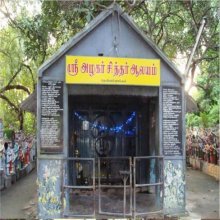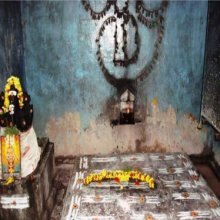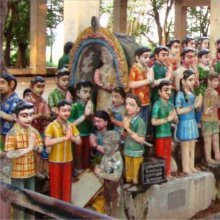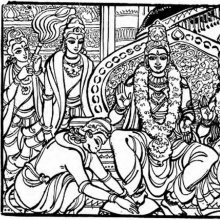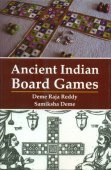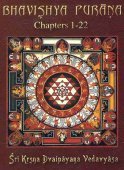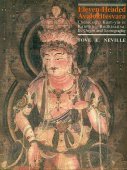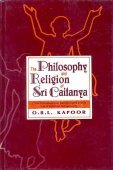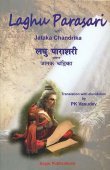Hundred: 1 definition
Introduction:
Hundred means something in Hinduism, Sanskrit. If you want to know the exact meaning, history, etymology or English translation of this term then check out the descriptions on this page. Add your comment or reference to a book if you want to contribute to this summary article.
Images (photo gallery)
(+387 more images available)
In Hinduism
Natyashastra (theatrics and dramaturgy)
Source: Shodhganga: Elements of Art and Architecture in the Trtiyakhanda of the Visnudharmottarapurana (natya)The number Hundred associated with Sūcyāsyahasta: one of the twenty-two Single-hand Gestures (in Indian Dramas) (known as asaṃyuktahastas), according to the Viṣṇudharmottarapurāṇa, an ancient Sanskrit text which (being encyclopedic in nature) deals with a variety of cultural topics such as arts, architecture, music, grammar and astronomy.—The word sūcī means a tool which is used for stitching. It refers to the needle. [...] In the Abhinayadarpaṇa, numbers like one and hundred are shown with the sūcyāsya-hasta posture. Paramabrahma i.e., the Supreme Entity is also indicated with this hand posture. Moreover, this hand posture also indicates the sun and a city.

Natyashastra (नाट्यशास्त्र, nāṭyaśāstra) refers to both the ancient Indian tradition (shastra) of performing arts, (natya—theatrics, drama, dance, music), as well as the name of a Sanskrit work dealing with these subjects. It also teaches the rules for composing Dramatic plays (nataka), construction and performance of Theater, and Poetic works (kavya).
See also (Relevant definitions)
Query error!
Full-text (+3902): Sataka, Shatashas, Satadha, Shatasahasra, Laksha, Shata, Shatika, Shatamana, Arbuda, Niyuta, Shatamukha, Shatayu, Shatin, Shatavarsha, Shatakoti, Ardhashata, Dvisata, Dasati, Parahshata, Shatakratu.
Relevant text
Search found 544 books and stories containing Hundred; (plurals include: Hundreds). You can also click to the full overview containing English textual excerpts. Below are direct links for the most relevant articles:
Mahavastu (great story) (by J. J. Jones)
Chapter XLIV - The chapter of the thousand (Sahasravarga of the Dharmapada) < [Volume III]
Chapter IX(a) - The Five Hundred Merchants (prose) < [Volume III]
Chapter XXV - The Dharmalabdha Jātaka < [Volume III]
Chaitanya Bhagavata (by Bhumipati Dāsa)
Verse 2.9.35 < [Chapter 9 - The Lord’s Twenty-One Hour Ecstasy and Descriptions of Śrīdhara and Other Devotees’ Characteristics]
Verse 2.163 < [Chapter 2 - The Lord’s Manifestation at the House of Śrīvāsa and the Inauguration of Saṅkīrtana]
Verse 2.5.145 < [Chapter 5 - Lord Nityānanda’s Vyāsa-pūjā Ceremony and His Darśana of the Lord’s Six-armed Form]
Mahabharata (English) (by Kisari Mohan Ganguli)
Section LXV < [Abhimanyu-badha Parva]
Section L < [Sisupala-badha Parva]
Section LI < [Sisupala-badha Parva]
Trishashti Shalaka Purusha Caritra (by Helen M. Johnson)
Part 22: Dharmanātha’s congregation < [Chapter V - Śrī Dharmanāthacaritra]
Part 5: Hanumat’s early career < [Chapter III - Hanumat’s birth and Varuṇa’s subjection]
Part 9: Initiation of Vimalavāhana < [Chapter I - Previous incarnation as Vimalavāhana]
Shiva Purana (by J. L. Shastri)
Chapter 33 - The March of Vīrabhadra < [Section 2.2 - Rudra-saṃhitā (2): Satī-khaṇḍa]
Chapter 8 - The span of life of the trinity < [Section 7.1 - Vāyavīya-saṃhitā (1)]
Chapter 19 - Worlds (loka) and Planets (graha) < [Section 5 - Umā-Saṃhitā]
Garga Samhita (English) (by Danavir Goswami)
Verse 1.4.8 < [Chapter 4 - Description of Questions About the Lord’s Appearance]
Verse 1.8.9 < [Chapter 8 - Description of Śrī Rādhikā’s Birth]
Verse 2.16.14 < [Chapter 16 - The Worship of Tulasī]
Related products
(+11 more products available)
